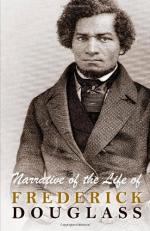|
This section contains 4,661 words (approx. 16 pages at 300 words per page) |

|
SOURCE: Stepto, Robert B. “Narration, Authentication, and Authorial Control.” In Frederick Douglass's Narrative of the Life of Frederick Douglass, edited by Harold Bloom, pp. 45-57. New York: Chelsea House, 1988.
In the following essay, originally published in 1978, Stepto examines the Narrative's various appended documents and revisions, noting how these authenticating texts seem to set up a dialogue with the narrative itself.
The strident, moral voice of the former slave recounting, exposing, appealing, apostrophizing, and above all, remembering his ordeal in bondage is the single most impressive feature of a slave narrative. This voice is striking not only because of what it relates but because the slave's acquisition of that voice is quite possibly his only permanent achievement once he escapes and casts himself upon a new and larger landscape. In their most elementary form, slave narratives are, however, full of other voices that are frequently just as responsible...
|
This section contains 4,661 words (approx. 16 pages at 300 words per page) |

|


